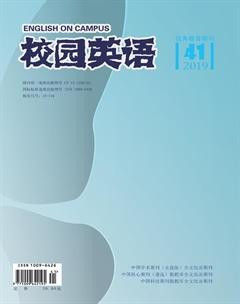Can We Define Translation as a Linguistic Process?
【Abstract】It has been at the center of fierce debate that how exactly we can define translation. This essay attempts to state that translation is not just a linguistic process, it also relates to cultural differences and translation strategies. Thus, we should try to apply suitable way to do precise and effective translations rather than confining it to linguistic aspect.
【Key words】 Cultural Differences; Translation Strategies
【作者簡介】汤青媚,武汉晴川学院。
1. Introduction
Translation can be defined as transferring the same meaning with different languages (Picken, 1983). So it is likely that this can be called a linguistic process because it deals with lexis, sentences, grammar and so on. However, other elements should also be taken into account.
2. Cultural Differences
(1)Expressions and culture.As is known, customs that differ among countries may make distortion and mislead readers. For example, people from western countries treat dogs as intimate friends, as companions. Dogs can even own household records as human beings. This seems ridiculous to those Chinese who just consider dogs as animals taking care of the family. Thus, in English, we can find phrases like “love me, love my dog”, “a lucky dog”, “every dog has his day”.
(2)Idioms and culture.Sometimes idioms in original text are factors leading to confusion in translation. For example, if we translate the word “potluck” from linguistic aspect, it seems refer to a pot that may bring luck to you which is totally different from its real meaning. It is argued that we could translate it with the knowledge of linguistics, which is to translate two words separately and then use synthetic analyses to get out a new meaning. In this way what we get are not the patchwork meanings of two words, but is the true meaning through creation. However, it is nearly impossible for the non-native learners to recognize the exact meaning of idioms since there are a large amount of backgrounds behind the idioms.
3. Translation Strategies
(1) Literal Translation.Literal translation seems to be a kind of method only stresses on semantic meaning of sentences or paragraphs. However, a part of words with solid definitions in the dictionaries do not often used in reality or we cannot find a concrete substance to refer to the meaning. Furthermore, as for those words with various meanings, when they are put into certain context, their meanings will change frequently that is not easy to reach (Hervey and Higgins, 1992). For example, the word “sound” in the phrase “sound advice”, it means “good”. But in the phrase “a sound person”, it refers to “calm”. Thus, in the literal translation the translator also needs to try to use replacement and choose the most appropriate word while following the form of original text rather than just using the linguistic tool.

